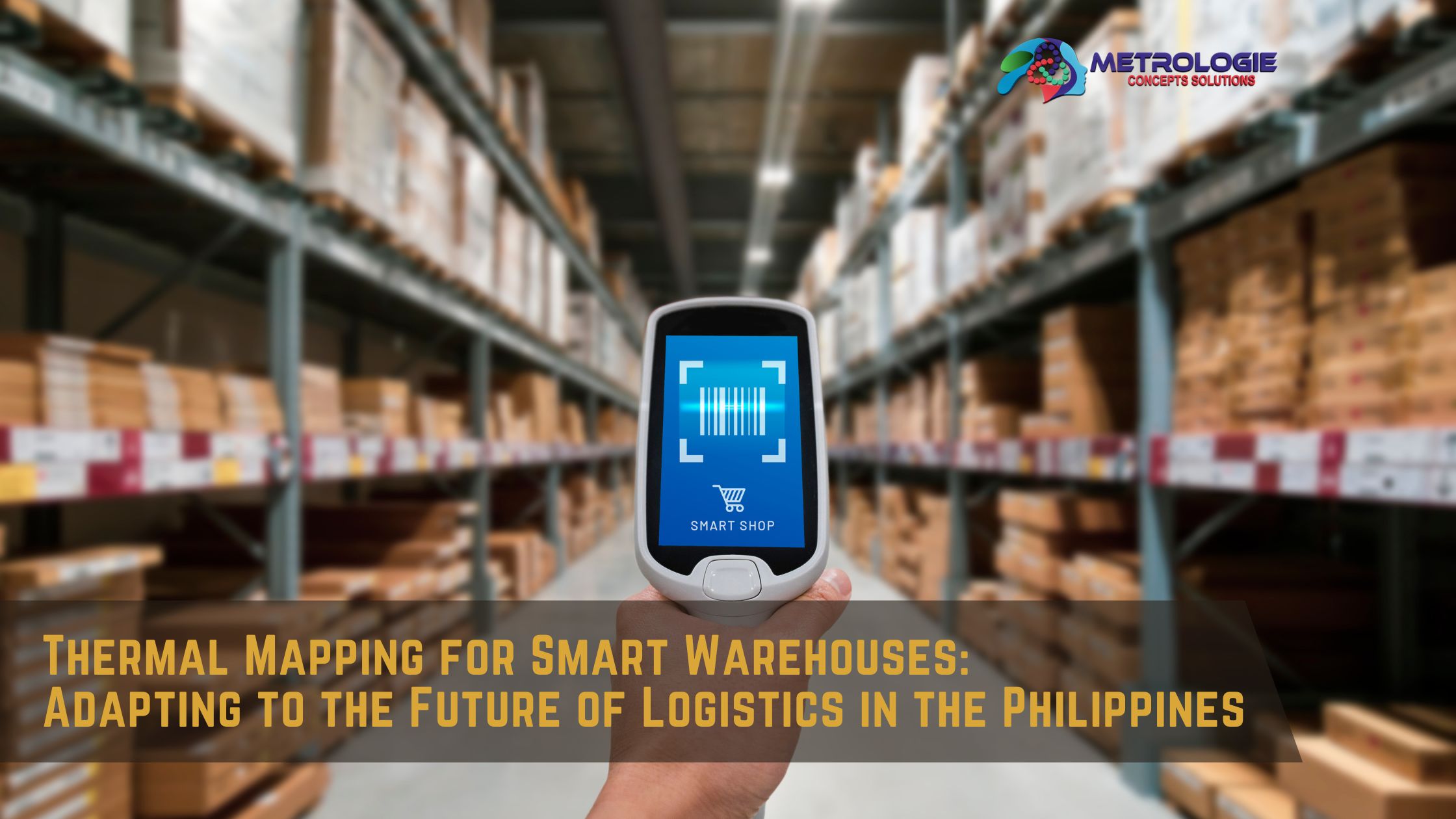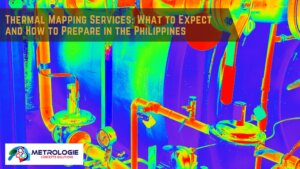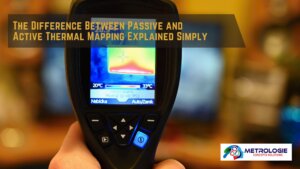Introduction
The logistics sector in the Philippines is evolving rapidly, with the rise of e-commerce and technological advancements pushing for more innovative solutions. Smart warehouses—enabled by automation, IoT, and data-driven processes—are at the forefront of this transformation. However, as technology advances, maintaining optimal environmental conditions becomes critical, particularly for temperature-sensitive goods like pharmaceuticals, food, and electronics.
Thermal mapping is a vital process that ensures smart warehouses maintain compliance, efficiency, and safety standards. This article explores how thermal mapping adapts to the needs of smart warehouses and why it’s a game-changer for the logistics industry in the Philippines.
1. What is Thermal Mapping?
Thermal mapping is the process of monitoring and analyzing temperature and humidity patterns within a space. It helps identify hot and cold zones, ensuring that warehouses operate within the required environmental conditions for stored goods.
a. Why is Thermal Mapping Important?
- Ensures compliance with industry standards (e.g., Good Distribution Practices or GDP).
- Protects temperature-sensitive goods from spoilage.
- Reduces energy costs by optimizing HVAC systems.
- Enhances safety by identifying potential risks like overheating zones.
In smart warehouses, thermal mapping integrates with advanced monitoring systems, enabling real-time adjustments for optimal performance.
2. The Rise of Smart Warehouses in the Philippines
Smart warehouses leverage technology to automate and streamline logistics operations. Key features include:
- IoT Devices: Sensors and trackers for real-time data collection.
- Automated Storage and Retrieval Systems (AS/RS): Machines that manage inventory with precision.
- AI and Machine Learning: For predictive analytics and operational efficiency.
As the Philippines experiences growth in e-commerce, demand for smart warehouses is increasing. Thermal mapping is critical in this scenario, as temperature control directly impacts product quality, regulatory compliance, and operational costs.
3. Key Applications of Thermal Mapping in Smart Warehouses
a. Temperature-Sensitive Goods
For industries like pharmaceuticals, food, and cosmetics, maintaining specific temperature ranges is non-negotiable. Thermal mapping ensures these ranges are met consistently.
b. Energy Optimization
Thermal mapping identifies inefficient areas in a warehouse, allowing businesses to recalibrate HVAC systems and reduce energy consumption.
c. Risk Management
Detecting and addressing thermal anomalies prevents equipment breakdowns and product spoilage, saving businesses from costly disruptions.
d. Regulatory Compliance
Philippine laws, such as FDA regulations, require strict temperature monitoring for certain goods. Thermal mapping helps meet these standards, avoiding fines and reputational damage.
4. How Thermal Mapping Works in a Smart Warehouse Setting
Thermal mapping in smart warehouses involves several steps:
a. Initial Assessment
- Evaluate the warehouse layout, including storage zones, cooling systems, and heat sources.
- Identify critical areas where temperature variations may occur.
b. Data Collection
- Use IoT-enabled sensors to monitor temperature and humidity levels.
- Collect data over a set period to capture seasonal and operational variations.
c. Analysis and Mapping
- Analyze data to identify patterns, such as hot or cold spots.
- Generate a detailed thermal map that visualizes temperature variations across the warehouse.
d. Implementation of Solutions
- Adjust HVAC systems to address anomalies.
- Reorganize storage layouts to keep sensitive goods in optimal zones.
e. Continuous Monitoring
- Integrate thermal mapping with warehouse management systems (WMS) for real-time updates.
- Conduct regular audits to ensure sustained compliance and efficiency.
5. Technologies Enhancing Thermal Mapping in Smart Warehouses
a. IoT Sensors
Smart sensors collect temperature and humidity data in real time, enabling accurate and continuous monitoring.
b. AI-Driven Analytics
AI tools analyze data to predict anomalies, optimize energy use, and ensure consistent environmental conditions.
c. Cloud-Based Systems
Cloud platforms store and process thermal data, making it accessible for decision-making and compliance audits.
d. Automation
Automated HVAC and ventilation systems adjust temperature and humidity based on thermal mapping data, reducing manual intervention.
e. Drones and Robotics
Drones equipped with thermal imaging cameras can quickly scan large warehouses for temperature inconsistencies.
6. Challenges in Implementing Thermal Mapping in the Philippines
Despite its benefits, implementing thermal mapping in the Philippine logistics sector comes with challenges:
a. High Initial Costs
Smart warehouse technologies, including thermal mapping, require significant upfront investment.
b. Technical Expertise
Limited local expertise in advanced thermal mapping systems can delay adoption.
c. Infrastructure Limitations
Old or poorly designed warehouses may require substantial upgrades to support thermal mapping and smart technologies.
d. Climate Factors
The Philippines’ hot and humid climate adds complexity to maintaining consistent warehouse conditions.
7. The Benefits of Thermal Mapping for Philippine Businesses
a. Enhanced Efficiency
By identifying and addressing inefficiencies, thermal mapping improves operational workflows and reduces costs.
b. Improved Product Quality
Maintaining optimal conditions ensures that goods reach customers in perfect condition.
c. Regulatory Compliance
Thermal mapping simplifies compliance with Philippine and international regulations, protecting businesses from legal repercussions.
d. Energy Savings
Optimized HVAC systems lead to significant reductions in energy consumption and costs.
e. Reputation Building
Consistent quality control boosts customer trust and loyalty, enhancing the brand’s reputation.
8. Industries That Benefit from Thermal Mapping in Smart Warehouses
a. Pharmaceuticals
Temperature-sensitive drugs and vaccines require precise storage conditions.
b. Food and Beverage
Thermal mapping ensures compliance with food safety standards, preserving product freshness.
c. Electronics
Heat-sensitive components demand controlled environments to prevent damage.
d. E-Commerce
With the rise of online shopping, efficient and compliant storage of various products is critical.
9. Partnering with Experts for Thermal Mapping Solutions
For businesses in the Philippines, partnering with experienced providers like Premier Physic Metrologie ensures accurate thermal mapping and long-term success. Their expertise in calibration and mapping services guarantees compliance and reliability for smart warehouses.
10. Future Trends in Thermal Mapping for Smart Warehouses
a. Integration with AI and Machine Learning
Advanced AI tools will provide predictive insights and automated adjustments.
b. Blockchain for Data Integrity
Blockchain technology will ensure that thermal mapping data is tamper-proof and reliable for audits.
c. Sustainable Solutions
Eco-friendly materials and energy-efficient systems will align thermal mapping with green initiatives.
d. Increased Accessibility
As technology advances, thermal mapping systems will become more affordable and accessible for small and medium enterprises (SMEs).
Conclusion
Thermal mapping is an indispensable tool for smart warehouses in the Philippines, addressing the challenges of temperature-sensitive goods, compliance, and efficiency. As the logistics sector embraces innovation, thermal mapping ensures that businesses stay competitive, reduce costs, and deliver superior quality.
By integrating thermal mapping with smart technologies, Philippine warehouses can adapt to the future of logistics and meet the growing demands of a modern, tech-driven economy.




